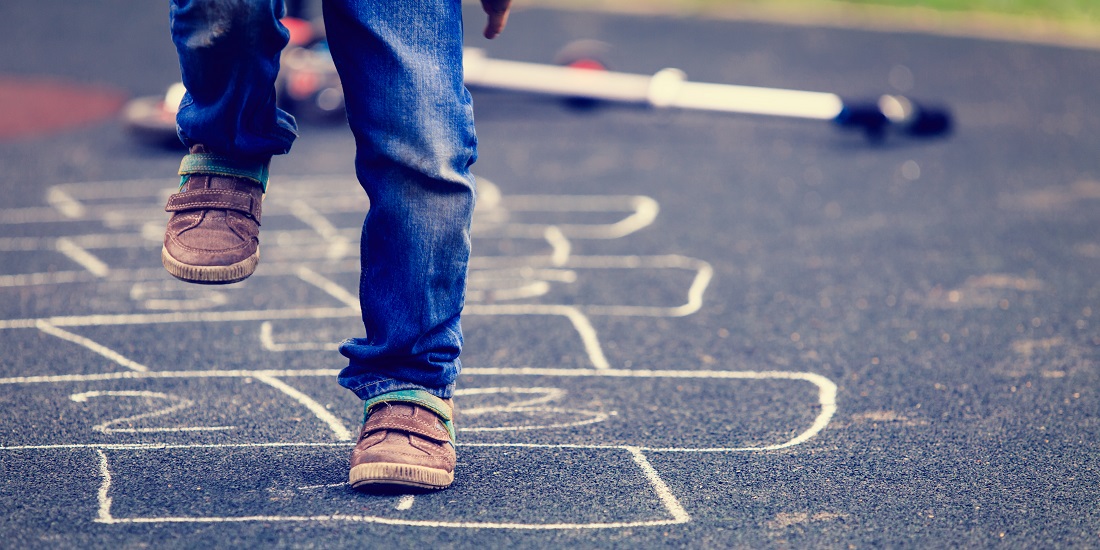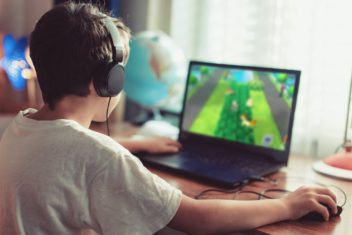Kids still play like their grandparents did
For generations, children have played blind man’s bluff, hide-and-seek, hopscotch and climbed trees. But in the “olden days,” free play could more often end in injury and death.
Freedom, outdoor play and a time for creativity and imagination are recurring themes in a recent study of childhood play that included three generations.
“It was interesting to hear all three generations in the survey express that they played a lot as kids, and we observed that several types of games repeated themselves in all the generations. Of course we find some variations in terms of context, the access to toys, adult participation and media influence. But the vast majority of participants reported that they had enough time to play,” says Ragnhild Røe Norderhus, assistant professor in NTNU’s Department of Teacher Education.
Norderhus collaborated with Gunilla Eide Isaksen, assistant professor at Volda University College, and Maria Øksnes, professor at NTNU on the new study that describes play through a historical perspective. The survey is based on 80 individual interviews of three generations of childhood memories in Norway. The sample consisted of women and men who were in the 20 to 30, 50 to 60 or 70 to 80 year old age group.
Out all day
Blind man’s bluff, hide-and-seek, role-playing, hopscotch and jumping rope, climbing trees and playing in the woods are examples of games that all three generations talk about when telling about their childhood games.
Common to all the generations was that the games emphasized imagination, freedom and joy at the core. Especially the two older generations describe how they could play outside all day long without adults controlling them, but the 20 to 30 year olds also describe how they could be out in the woods all day and play,” says Norderhus.
Free play doesn’t seem to have disappeared with younger generations. Imagination, creativity and the joy of play were emphasized as important by all generations – and that the play be controlled as little as possible by adults.

Imagination, creativity and the joy of play were highlighted as important by all the generations in the study. Photo: Shutterstock, NTB
“When older generations express concern about children’s play today, it’s linked to digitalization and the increased oversight by adults. At the same time they recognize that conditions now can also create more play opportunities and that games are therefore not necessarily worse today, just different,” says Norderhus.
- You might also like: Japan’s cuteness phenomenon is hundreds of years old
Material inequality and dangerous play
When you are asked to think back, it is easy to romanticize your own childhood and believe that everything was better then.
The three generations talk about aspects of play that have changed over time. The oldest generation of 70 to 80 year olds tell about far more dangerous activities that ended with injuries or deaths – such as rock wars, playing on ice floes drifting out to sea, sledding and kicksled collisions with cars. Participants from Trondheim talk about a game in which they hung onto trucks during the winter. The younger generations also reported some dangerous play, but none where children died.
Access to commercial toys has increased rapidly, and the generations describe two different worlds. The older participants had to make much greater use of what they found outside, like demolition and construction scraps that could be turned into cabins and weapons.
One of the younger respondents, Siri (26), describes a far different scenario: “We wheeled our doll carriages around a lot, and when I now see all the doll accessories I had, it’s a lot. I had a toboggan, a bike seat and a car seat for my doll, so the doll was involved in a lot of my play activity.”

A lot of people worry that iPads and screens make children more passive. The counterargument is that kids can gain important digital competence. Photo: Shutterstock, NTB
Shared increased digitalization concern
Technological development has become part of children’s play as it’s been introduced into society. The 50 to 60 year olds report that radio and TV influenced their play, and those aged 20 to 30 have several positive play memories related to TV and computer games.
“Some participants tell about playing games inspired by children’s TV shows and computer games. But at that time it wasn’t common for everyone to have Internet access, and the respondents say that they were often actually with other children when they played games or watched various TV series,” says Norderhus.
Many people find that today’s technology provides similar play opportunities for children, but all generations in the survey shared a concern about increased digitization among children nowadays.
“A lot of people worry that iPads and screens make children more passive and limit their imagination, creativity and physical activity. Others nuance this concern and say that today’s kids can gain digital competence that is important for the future,” says Norderhus.
- You might also like: If everyone is musical, why am I so afraid to sing?
Assessment of own play
Isaksen, Norderhus and Øksnes have investigated how 80 people assess their own childhood play, as well as play in today’s childhood.
The findings are the result of individual interviews, and the criteria for participation were age, free will and interest in sharing childhood memories.
Reference: I
kke dårligere enn før, men annerledes: En generasjonsstudie av lek i barndommen. (Not worse, but different: A generational study of play in childhood. English abstract p.27) www.ntnu.no/ojs/index.php/BARN/article/view/3763






